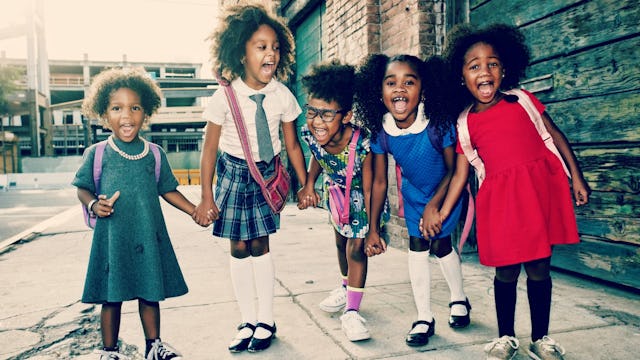This ‘Kindness Curriculum’ Is Free And Should Be Used In Every Classroom

Imagine living in a world that valued kindness enough to teach it along with academics. Educators would teach kids to manage their emotions in addition to standard curriculum such as math and science. Sounds pretty amazing, doesn’t it?
Well, the Center for Healthy Minds at the University of Wisconsin-Madison has created a free “kindness curriculum” for kids, designed to do just that. It’s a mindfulness-based curriculum for preschoolers that will bring kindness into the classroom.
“Faced with mental and physical health challenges at a global scale, we conduct rigorous scientific research to bring new insights and tools aimed at improving the wellbeing of people of all backgrounds and ages,” states the Center’s mission statement.
So how exactly does that work? According to Education Week, the kindness curriculum focuses on positive conflict resolution, acts of kindness, and teaching children to pay attention and manage their emotions in healthy ways. Here are a few of the activities included in the curriculum:
Using “Peace Wands”
The children in this program use peace wands to help with conflict resolution. One child gets to hold a heart wand and “speak from the heart” while the other child holds a star wand acts as the “star listener.” Then they take turns in the different positions, as speaker and listener.
The child with the heart wand describes what they’re feeling “in their heart.” The child with the star wand has to repeat back what was said. The goal is to solve the problem by talking it through, communicating each other’s emotions, and ideally reaching some sort of compromise.
Creating ‘Kindness Gardens’
Every time a child acts kindly, or when a classmate acts kindly toward them, they get to add a sticker to their kindness garden poster — demonstrating the importance of random acts of kindness.
“The idea is that friendship is like a seed, it needs to be nurtured and taken care of in order to grow,” says associate scientist Lisa Flook, along with the center’s former outreach specialist Laura Pinger. “Through that exercise, we got students talking about how kindness feels good and how we might grow more friendship in the classroom.”
“Belly Buddies”
During this activity, kids listen to music while lying on their back, and rest a small stone on their stomach. Then the teachers have the children pay close attention to the feeling of the stone rising and falling with each breath. This activity is designed to help kids pay attention and practice mindfulness.
“It’s something that’s so simple and it allows them to experience internal quietness and a sense of calm,” Flook tells Education Week.
“Mind Jar”
This activity has kids fill up a jar with water, glitter, and a tiny bit of soap. The kids then shake up their handmade glitter globes, put them down, and pay close attention as the glitter begins to settle. They’re taught that the way the glitter settles is similar to the way our minds settle down after they become upset.
When children participate in these activities, they’re learning to manage their emotions. They practice mindfulness by paying closer attention to their emotions, and use empathy by being mindful of the emotions of others.
The pilot testing of the kindness curriculum was implemented twice a week (over 12 weeks) for 20 minutes, for preschoolers in 6 different schools. Researchers found that kids who participated in the program improved in sharing, attention, and empathy. Kindness curriculum participants also saw an improvement in grades when compared with the control group.
The kindness curriculum is available for free here and has already been downloaded over 7,000 times. That’s encouraging.
We can all do our part in the kindness movement to make the world a more compassionate place. But it makes perfect sense to teach children empathy at school, in addition to leading by example at home. Because despite all of our differences, at the very least, I hope we all agree that we don’t want our kids to grow up to be assholes.
This article was originally published on